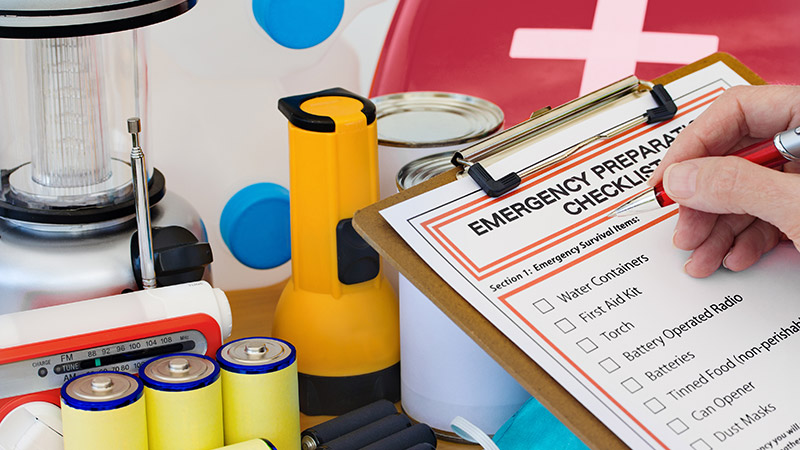We’re Stronger Together
With your help, we can advance education and improve student success in our community.

In 2016, there were 46 major disaster declarations made by the federal government (www.fema.gov/disasters). These disasters represented significant events such as fires, flooding, hurricanes, and tornadoes. Because they overwhelmed local and state resources, they qualified for federal assistance during the response and recovery process. In major disasters, it can take days for relief organizations and government resources to reach disaster affected communities with supplies. While many websites recommend that a disaster kit have three days of supplies, lessons learned from large-scale disasters such as Hurricane Katrina and the Northridge earthquake have led disaster experts to recommend emergency supplies that will last seven to ten days.
Preparing a basic disaster kit for you and your family will allow you to survive until outside resources are available. Building a comprehensive disaster kit will allow you to survive in comfort! Building a disaster kit takes time and can represent an additional expense. It’s okay to start slow and build your disaster kit on what your budget allows over time. But keep in mind that many of the items needed for a disaster kit are probably already in your home. Got an old backpack laying around? That could be the start of your car disaster kit. Have some old clothes and a jacket in your closet? You’ll need a spare set of clothes to put in your home disaster kit. Come up with your disaster kit inventory list, and you can even make a family scavenger hunt out of finding the items!
To help you build your disaster kit inventory list, we have provided a list of essential items for your home and car. Keep in mind that every family’s list will be different, depending on the number of people, whether or not there are kids in the household, and the presence of any specials needs or medical conditions. You should modify and add to this list as necessary. Links to other lists are provided for further reference and review.
Printable Home Disaster Kit Printable Car Disaster Kit
Keep your disaster kit in a safe location within your house that is most likely to be protected from falling objects, falling debris or broken glass, water leaks, and extremes in temperature. It is imperative to check your disaster kit and update the contents once per year. To make it easy to update, you can keep items that expire in a single bag or at the top of your kit. By rotating food items into your normal food inventory every six months, you can minimize the cost of maintaining your disaster food supply. Keep in mind that storage in extreme conditions (such as the heat of your trunk) will reduce the shelf life of food and water supplies. Rotate these out at the end of every summer to ensure you have a fresh supply.
Major retailers such as Walmart, Target, and even Costco are a great place to obtain your disaster supplies. Online retailers, such as Amazon or Costco.com, offer pre-made disaster kits; just keep in mind that these kits will give you a head start, but won’t prepare you for disaster until you add the many personal items needed for survival. Finally, you can search for local disaster supply retailers, such as Simpler Life in Redlands; they offer advice on everything from basic kits to comprehensive kits. Building a kit is easy once it is made a priority, start by searching your home for the above
In putting together your kit, try to purchase items that you are familiar with or use every day. Would you trust a flashlight that has never been turned on? Would it still work if you dropped it? Have you ever eaten a survival food bar? How will your body react to eating these bars for three days? In a disaster, you need to know your equipment and have confidence that it will work under adverse conditions. A focus on quality is well worth the extra investment!
It is always a good idea to cross reference your disaster supplies kit list with other lists. Here are a few reputable resources:
With your help, we can advance education and improve student success in our community.